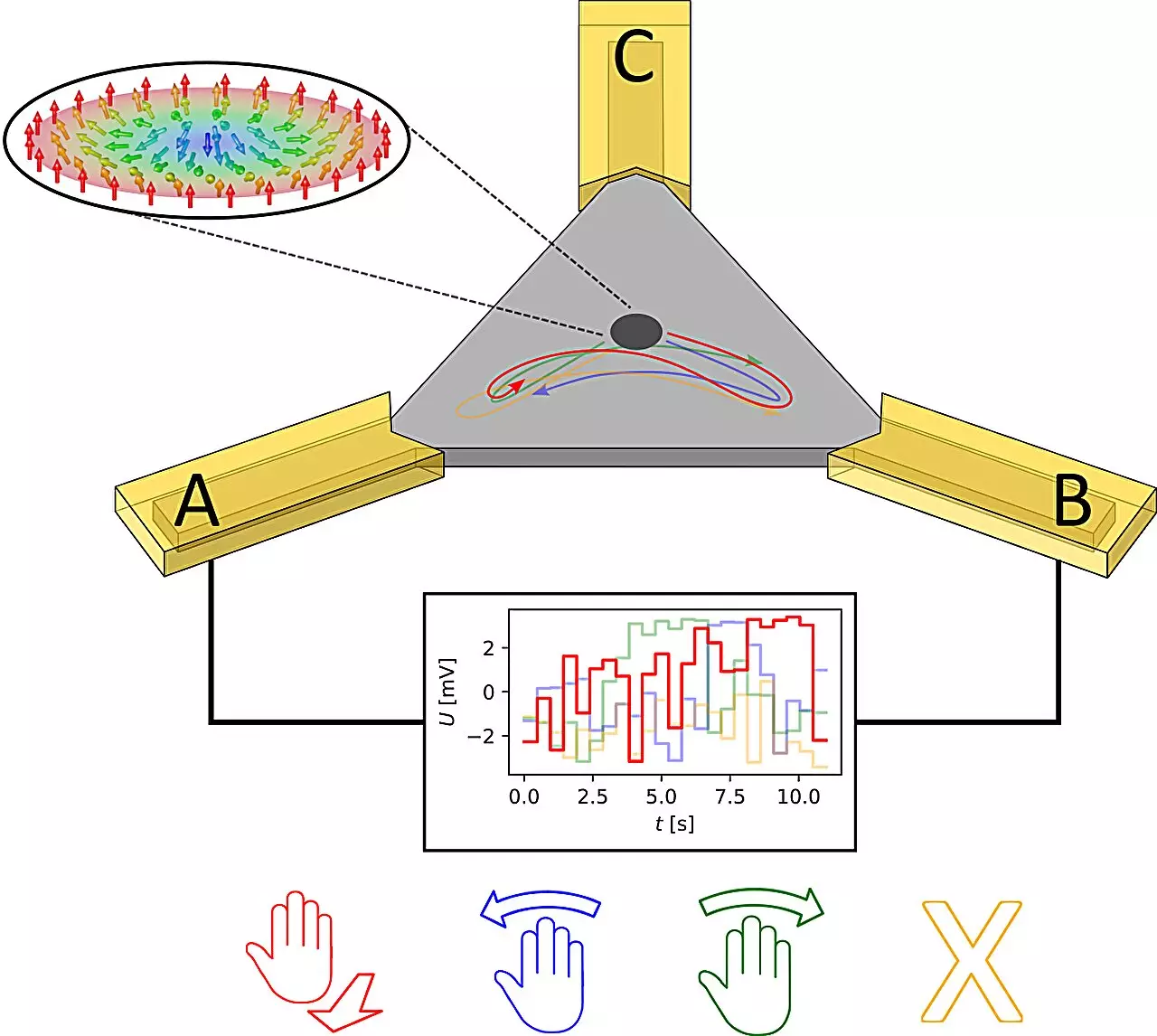Recent advancements in computing technology signal the dawn of a new era, one where traditional energy-intensive methods are being outperformed by novel approaches that leverage the principles of physics. Researchers at Johannes Gutenberg University Mainz have successfully enhanced Brownian reservoir computing, a potentially transformative technology that records and interprets hand gestures with remarkable accuracy. This novel system utilizes skyrmions—chiral magnetic entities—to decode simple gestures, exemplifying a significant leap forward in gesture recognition technology.
Understanding the Mechanism of Brownian Reservoir Computing
At its core, Brownian reservoir computing mirrors the architecture of artificial neural networks but stands out due to its lower energy requirements and simplified training processes. Unlike conventional neural networks which demand extensive training datasets, Brownian reservoir computing accomplishes its objectives with minimal training, making it a more energy-efficient alternative. Grischa Beneke, a key researcher in this project, elucidated that the output mapping mechanism is trained rather than the entire system, greatly simplifying the computational requirements.
To visualize this mechanism, consider a pond into which various stones are thrown. The resultant wave patterns reflect the number and position of these stones. In a similar fashion, the output mechanism of Brownian reservoir computing conveys information about the initial input through its dynamic response to external stimuli.
The researchers at JGU utilized innovative Range-Doppler radar technology to effectively capture the nuances of hand gestures such as swiping left or right. Equipped with two radar sensors from Infineon Technologies, the data captured is transformed into voltage signals that power a specially-designed reservoir—a multilayered triangular thin film stack. Within this triangular structure, skyrmions are mobilized through supplied voltages, making it possible to discern and analyze complex movements accurately.
The implications of this radar system are vast. By translating motion data into electrical signals, researchers can deduce specific hand gestures in a way that is not only efficient but also precise. This methodology offers an exciting alternative to existing software-dependent gesture recognition technologies, which often fall short in terms of energy efficiency and real-time processing capabilities.
Skyrmions are at the heart of this revolutionary approach. Initially seen only as promising candidates for data storage, their potential extends far beyond, favorably entering the realm of computing. These magnetic vortices possess unique properties that allow them to be influenced by external signals with minimal energy expenditure. Professor Mathias Kläui, who leads this research initiative, stated that skyrmions can be harnessed for both computing and sensory applications, showing remarkable versatility.
The premise of using skyrmions in a Brownian reservoir computing context hinges on their ability to perform random motions unhindered by intervening magnetic properties. This adaptability results in the requirement of significantly less energy to induce movement, making this method both sustainable and innovative.
One of the most striking findings from this research is the performance comparison between the newly proposed Brownian reservoir computing and traditional software-based neural networks. The results suggest that gesture recognition accuracy can be achieved that is comparable to or even surpasses conventional methods. This leap in performance is not only revolutionary but also indicative of a future where energy efficiency and computational accuracy can coexist harmoniously.
The findings indicate that the data captured from the Doppler radar align with the intrinsic dynamics of the reservoir system, allowing for real-time gesture recognition. This synergy between sensor data and reservoir computing is groundbreaking, as it indicates that similar technologies could address various computational challenges across different sectors.
The Path Ahead: Enhancements and Future Prospects
Despite the substantial achievements of this research, the authors emphasize avenues for further improvements. Currently, the read-out mechanism employs a magnetic-optical Kerr-effect (MOKE) microscope. However, the research team anticipates that switching to a magnetic tunnel junction could shrink the overall system size while enhancing efficiency. They are actively demonstrating the potential of this technology, paving the way for future advancements in both hardware and applications.
Brownian reservoir computing represents a significant stride forward in the field of gesture recognition, powered by advanced radar technology and innovative magnetic materials. As researchers continue to refine this sophisticated approach, the potential applications are vast, ranging from personal computing devices to revolutionary smart systems. The possibilities are exciting, and the journey toward a more efficient and effective computing future is just beginning.

